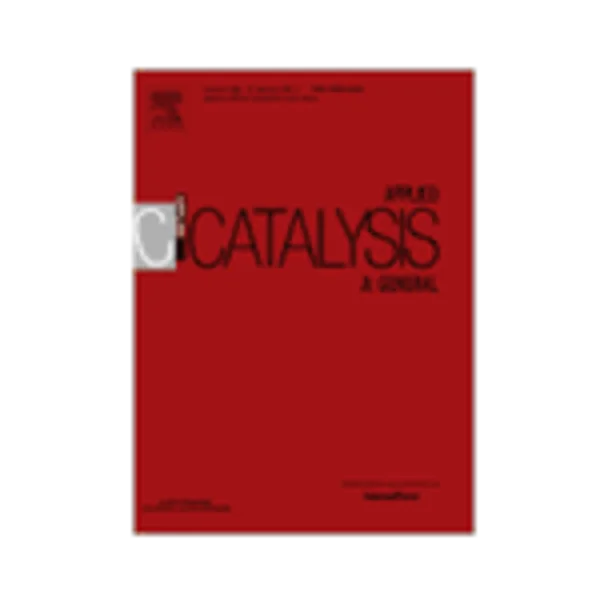-
fischer–tropsch synthesis using h2/co/co2 syngas mixtures: a comparison of paraffin to olefin ratios for iron and cobalt based catalysts
جزئیات بیشتر مقاله- تاریخ ارائه: 1392/07/24
- تاریخ انتشار در تی پی بین: 1392/07/24
- تعداد بازدید: 1114
- تعداد پرسش و پاسخ ها: 0
- شماره تماس دبیرخانه رویداد: -
fischer–tropsch synthesis (fts) using h2/co/co2 syngas mixtures over cobalt and iron based catalysts was carried out in a fixed-bed reactor. co2 rich feeds produce products that are mostly light hydrocarbons with higher molar paraffin to olefin (p/o) ratio, whereas co rich feeds shift the product composition to an ft type product with higher olefin product selectivity over both iron and cobalt based catalysts. although thep/o ratio for fts is strongly dependent on the operating conditions, the experimental evidence shows that the linear relationship between p(n+1)/o(n+1) and p(n)/o(n) holds for a large number of experiments. it is also shown to be independent of the type of the reactor, the composition of the syngas, reaction conditions and the kind of catalyst. two features about the ratio of ξ = [p(n+1)/o(n+1)]/[p(n)/o(n)] for the ft products have been identified: (1) with n > 2, the experimental values of ξn>2 are higher than 1, fairly constant and independent of chain length n; (2) with chain length n = 2, the ratio of p3/o3 to p2/o2 (ξn=2) is significantly different, and shows that ξn=2 ≪ ξn>2. an equilibrium hypothesis is considered in an attempt to explain this experimental phenomenon.a simple vapor–liquid equilibrium (vle) model indicates that the ratio of p(n+1)/o(n+1) to p(n)/o(n) changes in a range of (1, 1/β), where β is the variation of the vapor pressure coefficient, which is related to the incremental energy of vaporization per ch2 unit of the hydrocarbon chain. our experimental results support the expression when the chain length n > 2. but with chain length n = 2, this expression is unable to explain the relationship between p3/o3 and p2/o2. another model, based on quasi reaction equilibrium, is developed to explain the linear relationship between p(n+1)/o(n+1) and p(n)/o(n). we assume that the reaction of cn+1h2n+2 + cnh2n+2 = cn+1h2n+4 + cnh2n reaches quasi-equilibrium. because the experimental results are quite close to the equilibrium calculations, we postulate that the product distribution might be determined by considering reaction equilibrium.
مقالات جدیدترین رویدادها
-
استفاده از تحلیل اهمیت-عملکرد در ارائه الگوی مدیریت خلاقیت سازمانی و ارائه راهکار جهت بهبود
-
بررسی تاثیر ارزش وجوه نقد مازاد بر ساختار سرمایه شرکت های پذیرفته شده در بورس اوراق بهادار تهران
-
بررسی تأثیر سطح افشای ریسک بر قرارداد بدهی شرکت های پذیرفته شده در بورس اوراق بهادار تهران
-
بررسی تأثیر رتبه بندی اعتباری مبتنی بر مدل امتیاز بازار نوظهور بر نقد شوندگی سهام با تأکید بر خصوصی سازی شرکت ها
-
تأثیر آمیخته بازاریابی پوشاک ایرانی بر تصویر ذهنی مشتری پوشاک ایرانی (هاکوپیان)
-
critic on typology of ceiling of amir inn and arch in tabriz bazaar & complex shaking resistance evaluation
-
تعیین ارزش زمان سفر با استفاده از روش ترجیحات بیان شده مطالعه موردی: شهر تهران
-
بررسی مؤلفه های تأثیر گذار در تحلیل هویت شهری
-
گزارش یک مورد سندرم آلبرایت
-
مقایسه مفهوم ارتباط درون و بیرون در ایران و جهان از دیدگاه کریستیان نوربرگ شولتز
مقالات جدیدترین ژورنال ها
-
مدیریت و بررسی افسردگی دانش آموزان دختر مقطع متوسطه دوم در دروان کرونا در شهرستان دزفول
-
مدیریت و بررسی خرد سیاسی در اندیشه ی فردوسی در ادب ایران
-
واکاوی و مدیریت توصیفی قلمدان(جاکلیدی)ضریح در موزه آستان قدس رضوی
-
بررسی تاثیر خلاقیت، دانش و انگیزه کارکنان بر پیشنهادات نوآورانه کارکنان ( مورد مطالعه: هتل های 3 و 4 ستاره استان کرمان)
-
بررسی تاثیر کیفیت سیستم های اطلاعاتی بر تصمیم گیری موفق در شرکتهای تولیدی استان اصفهان (مورد مطالعه: مدیران شرکتهای تولیدی استان اصفهان)
-
روانشناسی قانونی: ضرورتی در نظام عدالت کیفری ایران
-
تدوین مدل معادلات ساختاری اهمال کاری بر اساس سرمایه روان شناختی (امید، خوش بینی، تاب آوری و خودکارآمدی) با اثر تعدیل کنندگی تفکر انتقادی
-
بررسی رابطه بین سبکهای مدیریت مدیران با سلامت سازمانی و عملکرد شغلی کارکنان (اداره کل بنادر و دریانوردی استان خوزستان منطقه ویژه بندر امام خمینی)
-
بررسی اصل عدم با اصل استصحاب
-
تاثیر ویژگی مدیریتی ( خودشیفتگی، توانایی مدیر ) بر کنترل حسابرسی داخلی با تاکید بر نقش سیستم های حسابداری مدیریت




سوال خود را در مورد این مقاله مطرح نمایید :